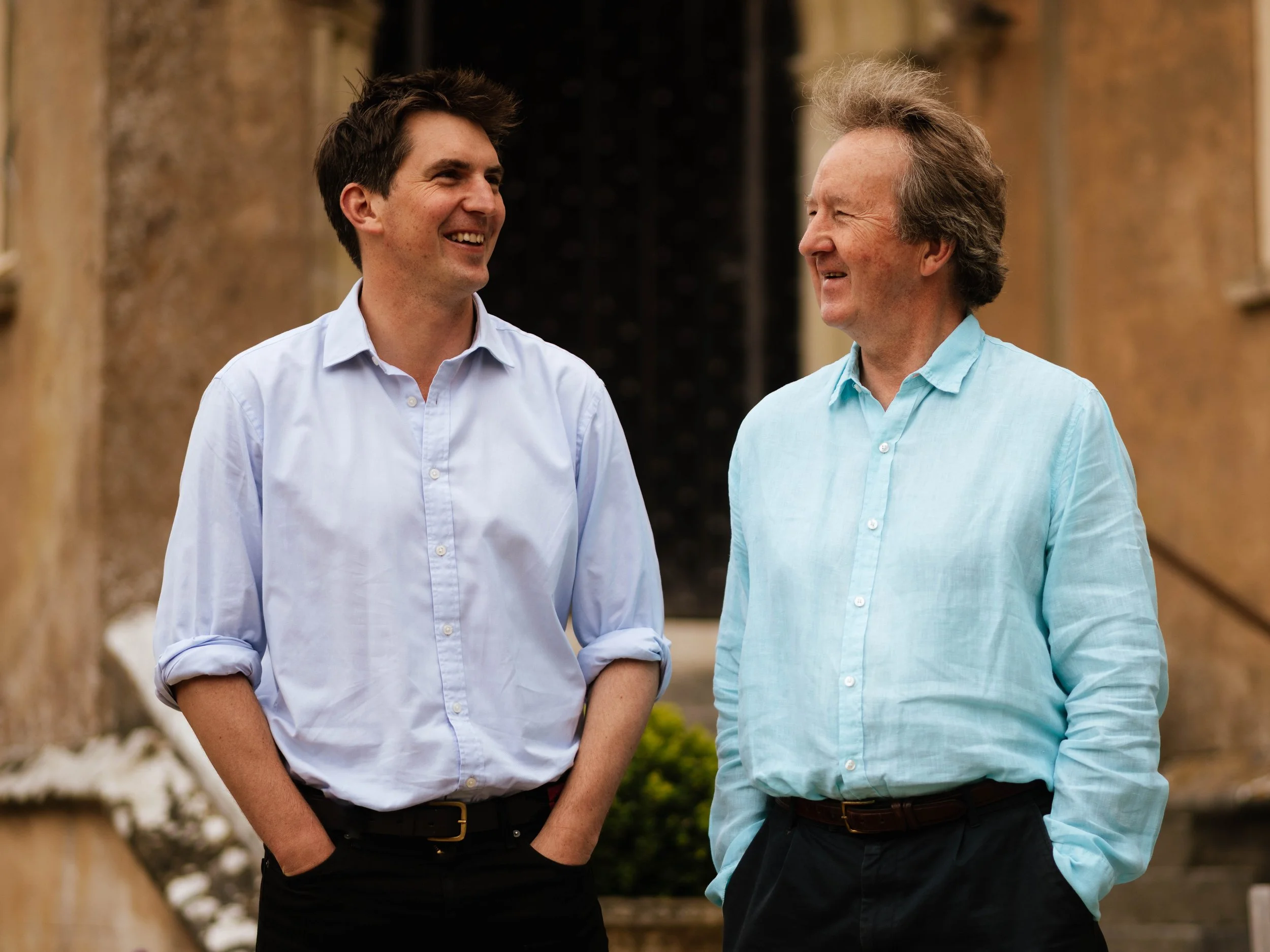
History
A family estate…
Since 1349, four families have resided at Bisterne, and all four are in fact closely related. They are: Betteshorne (1349-1400), Berkeley (1400-1522), Compton (1522-1792) and Mills (1792 to present). The immediate past owners, by date of occupancy, were Sir John Mills (1908-1954), and his son Major John Mills OBE (1954-2003), who died in 2012 and left the estate to his nephew, Hallam Mills, DL. The estate is now run by Hallam Mills, and his son Leo.
Bisterne legends…
The Legend of the Bisterne Dragon has lived on over the centuries. It was slain by Sir Maurice Berkeley in the latter half of the 15th century. The hounds that helped Sir Maurice kill the dragon are immortalised above the wings of Bisterne Manor: they were called Grim and Holdfast (pictured).

History…
Katherine Berkeley, sister of Sir William Berkeley and married, as a second marriage, to Sir John Brereton, built the central heart of the present house (top picture) in about 1520. This forms the dining room today, but would probably have been a double-height hall thatched with straw originally – possibly with a small accommodation unit on the flank. There are still signs of a very old part of the house in the northeast corner, notably a very ancient staircase.
In 1652 the Richard Compton added two wings flanking the central hall structure, adding considerably to the house’s dimensions. In about 1834, the house was altered to accommodate art and furniture acquired on his Grand Tour by Francis Mills. At that time, the house was encased in mellow stucco to cover over the various different styles of bricks used over the years. Finally, in late Victorian times, additions were made the rear of the house, and indoor sanitation, electricity and central heating installed. The Manor has a detailed entry in New Pevsner Guide: Hampshire South. The Manor can be visited on Heritage Open Day, by appointment - please see contact pages for more info.
Today…
Today the estate is run by Hallam Mills and his son Leo. We welcome all enquiries about the history the estate, our work on conservation, the farming, educational and charitable enterprises looking to use the land, and residential or commercial tenancies.



